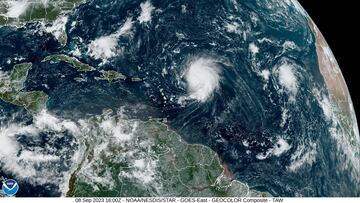NATURE
Why is it difficult to predict hurricane paths and timelines?
The formation of hurricanes makes much of plotting their trajectory very difficult, though there are methods for it.

Hurricane Lee is still yet to make landfall but is still causing disruption on the southeast US coastline. It has progressed northwards from the Caribbean, hitting a peak strength of Category 5 before weakening to a Category 3.
Initial reports suggested that Lee would not make landfall in the US. This call has been fluctuating ever since, with the National Hurricane Center (NHC) believing there is a high chance that Lee will make landfall in New England this weekend.
“On the forecast track, the center of Lee will pass west of Bermuda Thursday and Thursday night and then approach the coast of New England or Atlantic Canada late this week,” the NHC said.
Considering the technology available at our fingertips every day, it may be surprising that it is not easy to pinpoint the trajectory of hurricanes.
Why it is difficult to predict hurricane paths
Hurricanes are influenced by a multitude of variables such as temperature, humidity, wind patterns, and air pressure. Variations in sea surface temperatures and ocean currents also affect a hurricane’s intensity and trajectory.
These factors interact in complicated ways that are oft changing, not helped by the relatively-large lifespan of a tropical storm. Lee has been swirling around for over a week with another five days of predictions to make; so much can change so quickly.
The predictions rely on computer models that simulate the atmosphere and oceans. While these models have improved over time, there are still limitations in their accuracy, especially in capturing fine-scale details.






